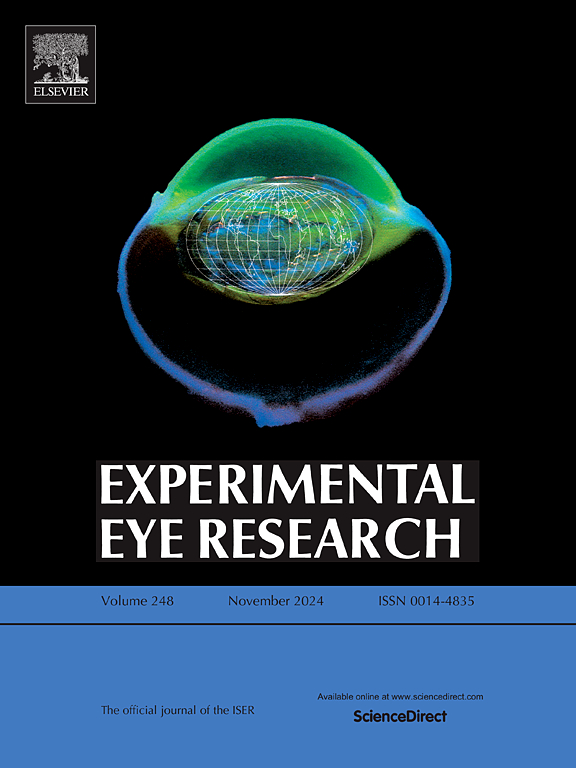Disruption of the 12-hour ultradian rhythm in ocular surface microbiota of T2DM C57BL/6J mice
IF 3
2区 医学
Q1 OPHTHALMOLOGY
引用次数: 0
Abstract
The ocular surface (OS) microbiota exhibits a 12-h ultradian rhythm in healthy mice, essential for ocular homeostasis, yet its regulation in type 2 diabetes mellitus (T2DM), associated with ocular surface diseases, remains unclear. This study investigated the temporal dynamics of the OS microbiota in control (NC) and T2DM C57BL/6J mice over a 24-h cycle (ZT0, ZT6, ZT12, ZT18) using 16S rRNA sequencing and JTK_CYCLE analysis of diversity indices, OTU composition, and family-level abundance. In NC mice, a robust 12-h rhythm with distinct temporal patterns was observed. In contrast, T2DM disrupted this rhythmicity, with diversity indices and OTU compositions lacking temporal structure, and family-level rhythms, including those of Rhodocyclaceae and Pseudomonadaceae, altered, often shifting toward 24-h patterns in selected taxa and diversity measures. PCoA confirmed significant temporal clustering in NC but not in T2DM. These findings suggest that T2DM disrupts the 12-h ultradian rhythm of the OS microbiota, inducing complex temporal dysregulation, potentially contributing to ocular pathology, and highlight the potential of chronotherapeutic strategies to restore microbial rhythmicity and alleviate T2DM-related complications.

T2DM C57BL/6J小鼠眼表微生物群12小时超昼夜节律的破坏
健康小鼠眼表(OS)微生物群表现出12小时的超昼夜节律,这对眼内稳态至关重要,但其在与眼表疾病相关的2型糖尿病(T2DM)中的调节尚不清楚。本研究利用16S rRNA测序和JTK_CYCLE分析多样性指数、OTU组成和家族水平丰度,研究了对照(NC)和T2DM C57BL/6J小鼠(ZT0、ZT6、ZT12、ZT18) 24 h周期内OS微生物群的时间动态。在NC小鼠中,观察到具有不同时间模式的稳健的12-h节律。相比之下,T2DM破坏了这种节律性,多样性指数和OTU组成缺乏时间结构,包括红环科和假单胞菌科在内的家族水平节律发生改变,在某些分类群和多样性测量中经常转向24小时模式。PCoA证实NC有明显的时间聚类,而T2DM没有。这些研究结果表明,T2DM破坏了OS微生物群的12小时超昼夜节律,诱导复杂的时间失调,可能导致眼部病理,并强调了时间治疗策略在恢复微生物节律性和减轻T2DM相关并发症方面的潜力。
本文章由计算机程序翻译,如有差异,请以英文原文为准。
求助全文
约1分钟内获得全文
求助全文
来源期刊

Experimental eye research
医学-眼科学
CiteScore
6.80
自引率
5.90%
发文量
323
审稿时长
66 days
期刊介绍:
The primary goal of Experimental Eye Research is to publish original research papers on all aspects of experimental biology of the eye and ocular tissues that seek to define the mechanisms of normal function and/or disease. Studies of ocular tissues that encompass the disciplines of cell biology, developmental biology, genetics, molecular biology, physiology, biochemistry, biophysics, immunology or microbiology are most welcomed. Manuscripts that are purely clinical or in a surgical area of ophthalmology are not appropriate for submission to Experimental Eye Research and if received will be returned without review.
 求助内容:
求助内容: 应助结果提醒方式:
应助结果提醒方式:


